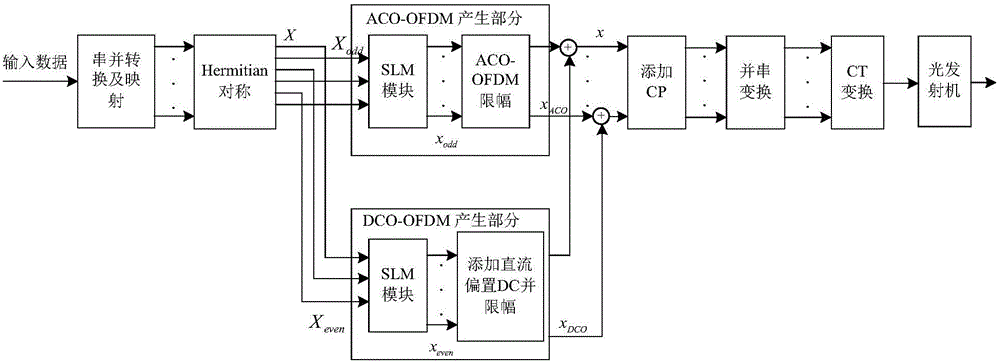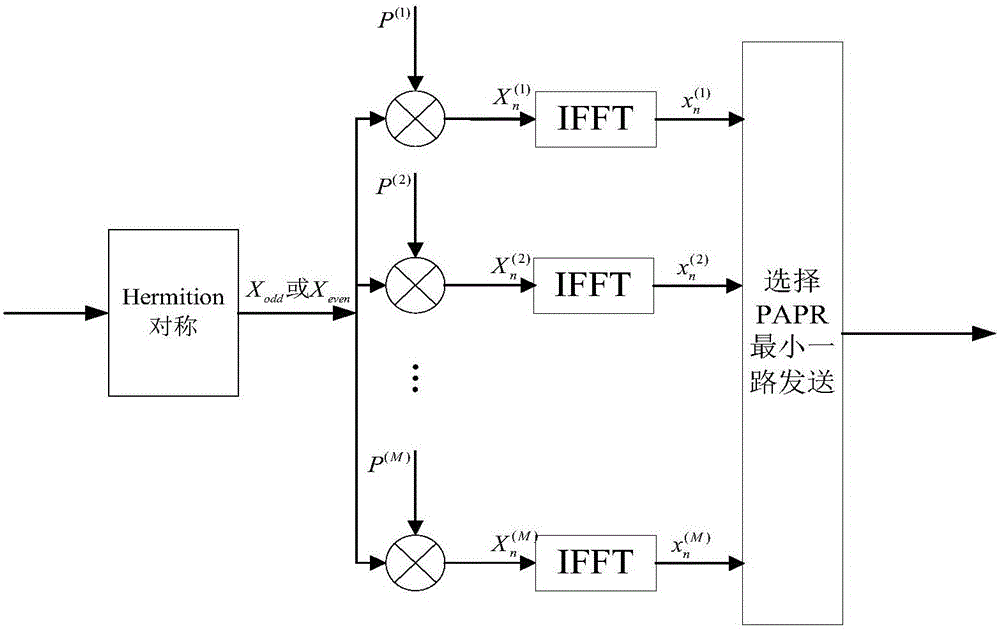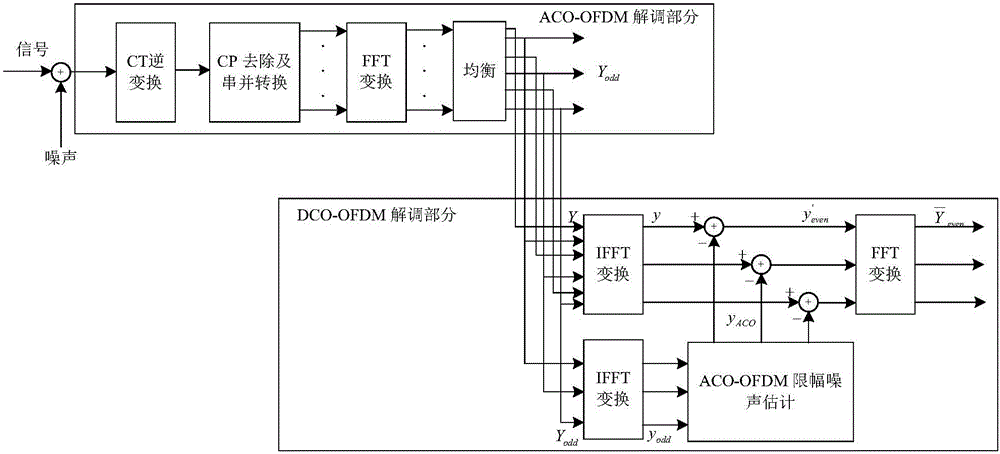ADO (Asymmetrically Clipped DC Biased Optical)-OFDM (Orthogonal Frequency Division Multiplexing) system PAPR (Peak to Average Power Ratio) inhibition method based on SLM (Selected Mapping) and CT (Companding Transform)
An ADO-OFDM, peak-to-average ratio suppression technology, applied in the field of ADO-OFDM system peak-to-average ratio suppression, can solve problems such as inter-symbol interference and suppression of system information transmission rate
- Summary
- Abstract
- Description
- Claims
- Application Information
AI Technical Summary
Problems solved by technology
Method used
Image
Examples
Embodiment Construction
[0023] The implementation of the present invention will be specifically described below in conjunction with the accompanying drawings.
[0024] The present invention proposes a method for reducing system peak-to-average ratio based on Selected Mapping (SLM) and Companding Transform (CT). In some specific environments, it is required that the asymmetrically limited DC bias optical OFDM communication system has a lower PAPR. However, it is difficult to achieve the required reduction effect by using only one algorithm, so it can be dealt with in the form of a combination of multiple methods. This patent adopts selective mapping and companding transformation methods that are complementary in performance to combine, and uses the serial method as the combined method of the algorithm. According to the structural characteristics of the asymmetric clipped DC bias optical OFDM communication system, a selective mapping algorithm is embedded in the ACO-OFDM and DCO-OFDM signal generation...
PUM
 Login to View More
Login to View More Abstract
Description
Claims
Application Information
 Login to View More
Login to View More - R&D
- Intellectual Property
- Life Sciences
- Materials
- Tech Scout
- Unparalleled Data Quality
- Higher Quality Content
- 60% Fewer Hallucinations
Browse by: Latest US Patents, China's latest patents, Technical Efficacy Thesaurus, Application Domain, Technology Topic, Popular Technical Reports.
© 2025 PatSnap. All rights reserved.Legal|Privacy policy|Modern Slavery Act Transparency Statement|Sitemap|About US| Contact US: help@patsnap.com



